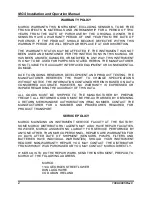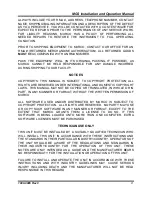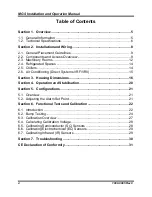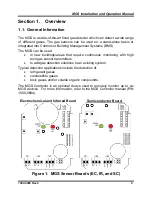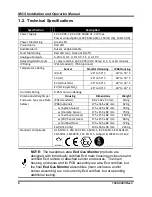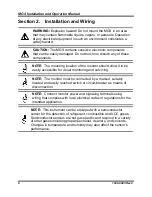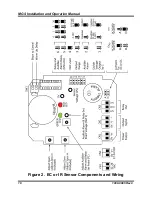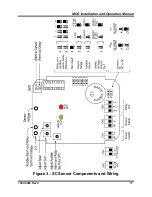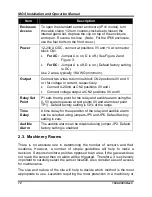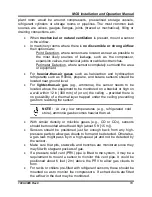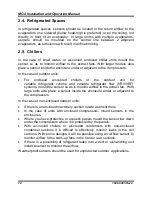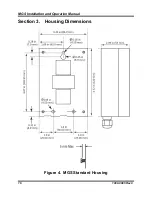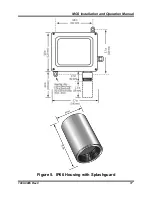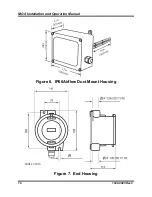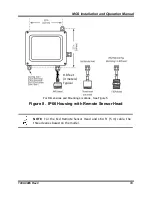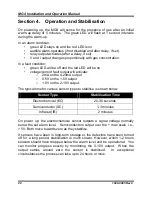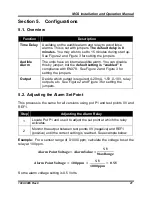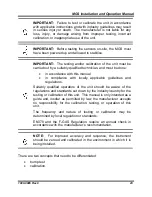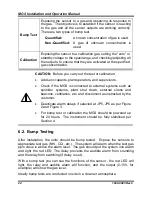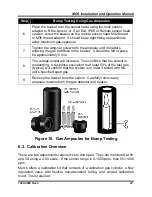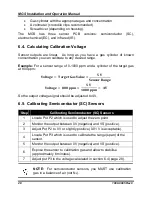
MGS Installation and Operation Manual
1000-0085 Rev 0
13
plant room would be around compressors, pressurised storage vessels,
refrigerant cylinders or storage rooms or pipelines. The most common leak
sources are valves, gauges, flanges, joints (brazed or mechanical), filling or
draining connections, etc.
•
When
mechanical or natural ventilation
is present, mount a sensor
in the airflow.
•
In machinery rooms where there is
no discernible or strong airflow
then options are:
Point Detection, where sensors are located as near as possible to
the most likely sources of leakage, such as the compressor,
expansion valves, mechanical joints or cable duct trenches.
Perimeter Detection, where sensors completely surround the area
or equipment.
•
For
heavier-than-air gases
such as halocarbon and hydrocarbon
refrigerants such as R404A, propane, and butane sensors should be
located near ground level.
•
For
lighter-than-air gas
(e.g., ammonia), the sensor needs to be
located above the equipment to be monitored on a bracket or high on
a wall within 12 in (300 mm) of (or on) the ceiling – provided there is
no possibility of a thermal layer trapped under the ceiling preventing
gas from reaching the sensor.
NOTE:
At very low temperatures (e.g., refrigerated cold
store), ammonia gas becomes heavier than air.
•
With similar density or miscible gases (e.g., CO or CO
2
), sensors
should be mounted about head high (about 5 ft [1.5 m]).
•
Sensors should be positioned just far enough back from any high-
pressure parts to allow gas clouds to form and be detected. Otherwise,
a gas leak might pass by in a high-speed jet and not be detected by
the sensor.
•
Make sure that pits, stairwells and trenches are monitored since they
may fill with stagnant pockets of gas.
•
If a pressure relief vent (PRV) pipe is fitted to the system, it may be a
requirement to mount a sensor to monitor this vent pipe. It could be
positioned about 6 feet (2 m) above the PRV to allow gas clouds to
form.
•
For racks or chillers pre-fitted with refrigerant sensors, these should be
mounted so as to monitor the compressors. If extract ducts are fitted
the airflow in the duct may be monitored.


